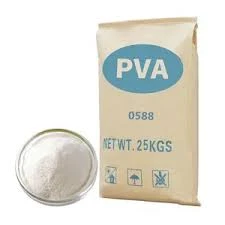The Role of Chemical Auxiliary Agents in Modern Industries
Chemical auxiliary agents, often simply referred to as auxiliary agents, play a crucial role across a variety of industries, acting as facilitators that enhance process efficiency, product quality, and environmental sustainability. They are substances added during the production process to improve chemical reactions and the final properties of products, driving innovation in sectors such as textiles, paper, plastics, pharmaceuticals, and food processing.
Understanding Chemical Auxiliary Agents
Chemical auxiliary agents can be classified into several categories based on their functions. Common types include surfactants, dispersants, emulsifiers, stabilizers, and catalysts. Each type serves a unique purpose. For example, surfactants are vital in reducing surface tension, thereby improving wetting properties and allowing for better interactions between liquids and solids. Emulsifiers allow for the stable mixing of immiscible liquids, such as oil and water, which is particularly important in food and cosmetic industries.
Applications in Various Industries
1. Textile Industry In textiles, chemical auxiliary agents are used in dyeing and finishing processes. They help achieve uniform color distribution, enhance fabric softness, and improve water repellency. Without these agents, achieving the desired fabric qualities would be significantly more challenging. For instance, non-ionic surfactants are commonly used in washing and dyeing processes to facilitate the removal of dirt and improve dye uptake.
2. Paper and Pulp Industry The production of paper involves various treatments to enhance paper quality. Chemical auxiliary agents such as retention aids, drainage aids, and wetting agents are essential for optimizing the papermaking process. They enhance fiber retention, reduce water usage and improve paper brightness and printability, which are vital for appealing final products.
chemical auxiliary agent

3. Plastic Industry In the manufacturing of plastics, additives such as impact modifiers, flame retardants, and processing aids are indispensable. These chemical auxiliary agents improve the processing properties and end-use performance of plastics. For example, lubricants can enhance the flow of polymer melts through machinery, thereby reducing energy consumption and increasing production efficiency.
4. Pharmaceutical Industry In pharmaceuticals, auxiliary agents are used in drug formulation to enhance solubility and bioavailability of active ingredients. Excipients, such as binders and fillers, are critical for ensuring consistent dosage and stability of medication. Moreover, chemical agents also contribute to the modification of release rates, enabling controlled drug delivery systems.
5. Food Processing The food industry heavily relies on chemical auxiliary agents to maintain quality, safety, and shelf life. Emulsifiers and stabilizers prevent separation in products like salad dressings and mayonnaise, while preservatives extend the freshness of packaged goods. Additionally, agents like anti-oxidants protect food from spoilage, ensuring consumer safety and satisfaction.
Environmental Considerations
As industries seek to balance production efficiency with sustainability, the development of eco-friendly chemical auxiliary agents is gaining attention. Biodegradable and non-toxic alternatives are being researched and implemented, reducing the environmental footprint associated with traditional chemical agents. The push for greener chemistry aligns with global environmental objectives, promoting practices that minimize harm to the ecosystem.
Conclusion
Chemical auxiliary agents are the unsung heroes in the production processes of numerous industries. Their roles extend beyond mere facilitators; they are integral to enhancing product performance, ensuring quality, and meeting regulatory standards. As technology advances and industries evolve, the future of chemical auxiliary agents seems promising, with increasing emphasis on innovation and sustainability. By embracing environmentally friendly alternatives and optimizing their applications, industries can not only improve their operational effectiveness but also contribute to a greener planet. The continuous development and application of these agents will undoubtedly shape the future of manufacturing and product formulation, paving the way for improved efficiencies and reduced environmental impact in the years to come.




